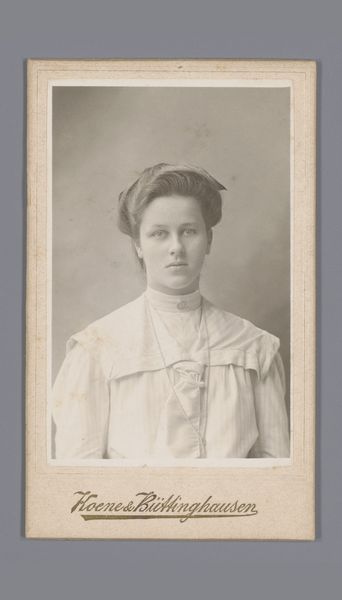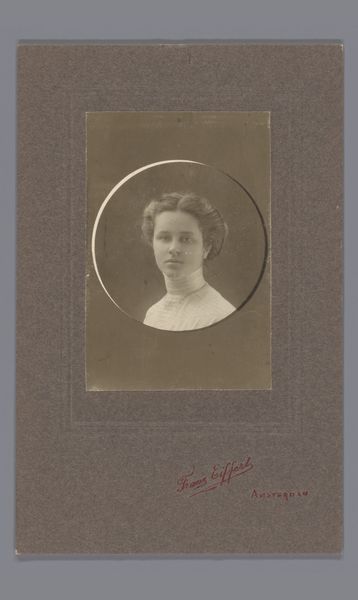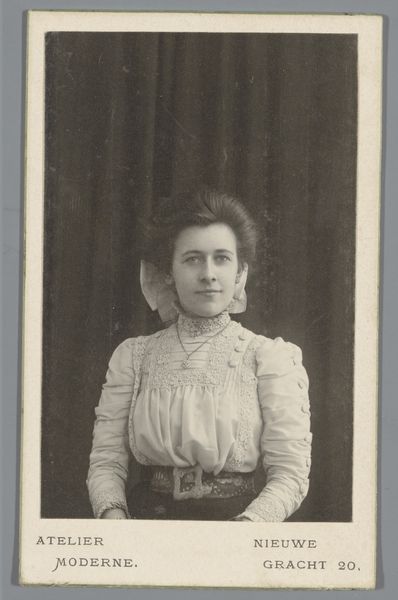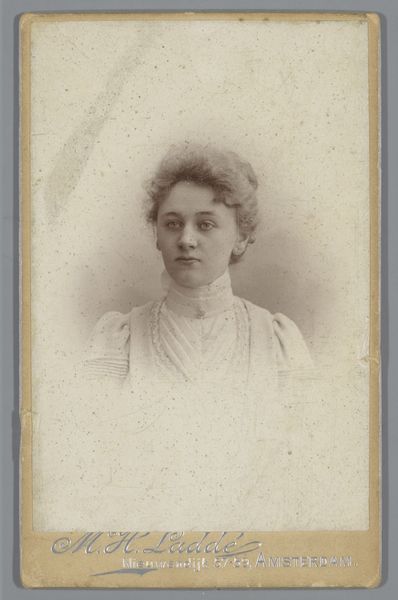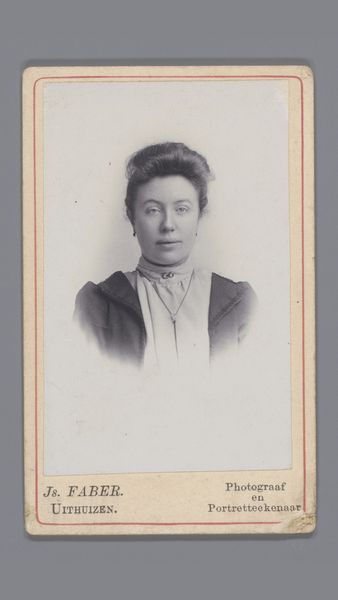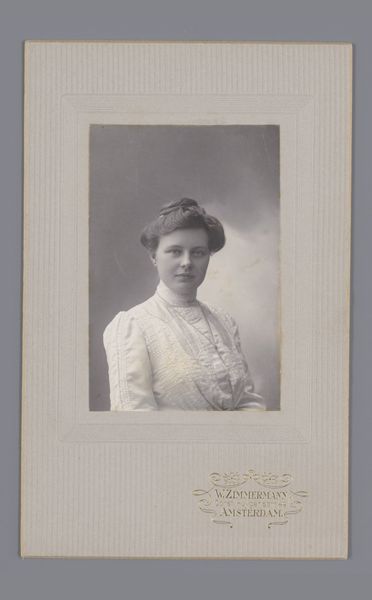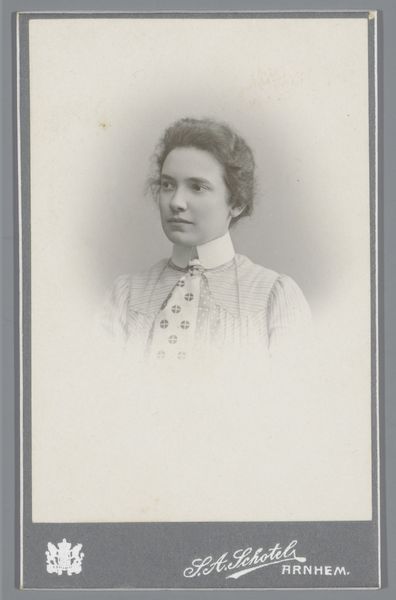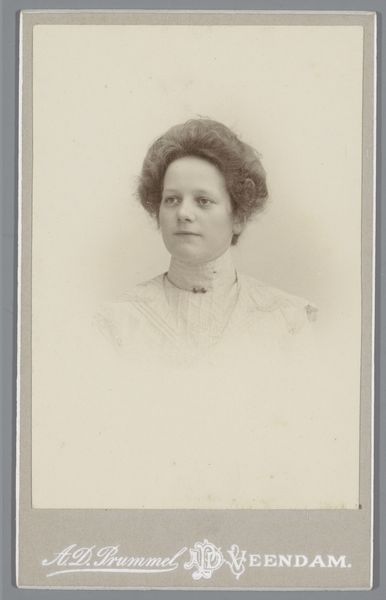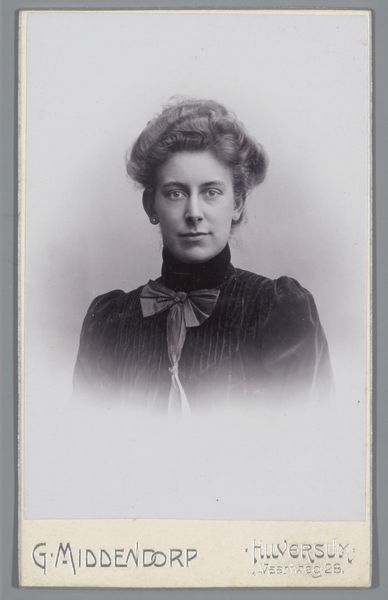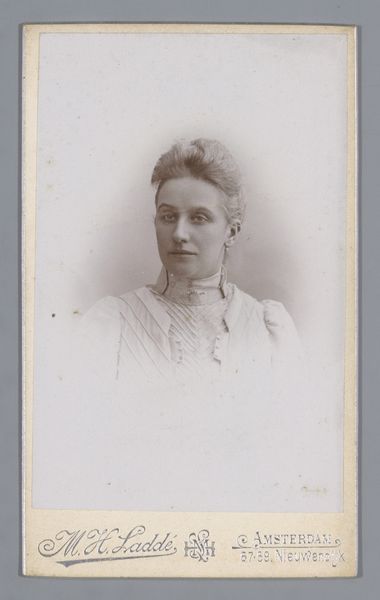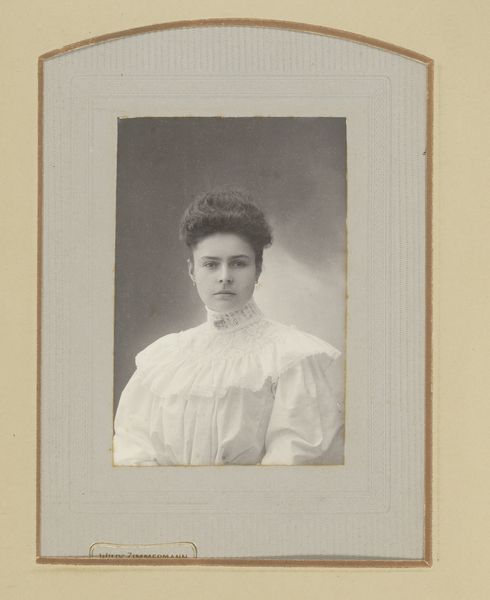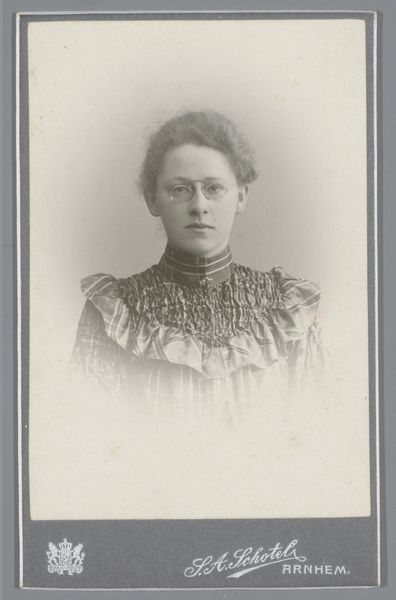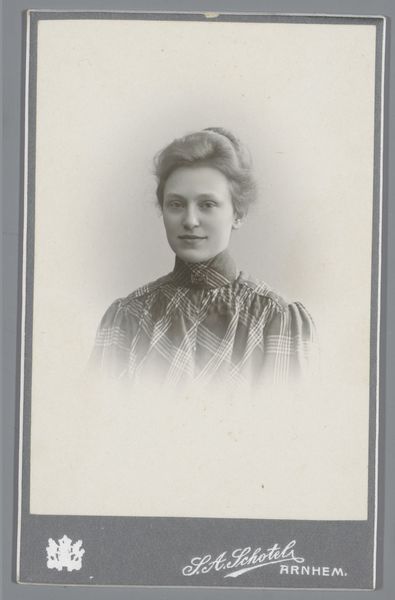
photography, albumen-print
#
portrait
#
photography
#
academic-art
#
albumen-print
#
realism
Dimensions: height 166 mm, width 105 mm
Copyright: Rijks Museum: Open Domain
Editor: This is "Portret van Bora Keyser," an albumen print photograph created sometime between 1880 and 1940. It strikes me as quite a formal portrait, and I’m curious about its purpose. What do you see when you look at this image? Curator: What strikes me is the tangible nature of the photograph itself. Consider the albumen print process – layers of egg white and silver salts meticulously applied to paper. It’s labor intensive. We should examine its status not only as art, but as a commodity, a crafted object made within specific economic and social conditions. Editor: A commodity? But isn’t it a portrait? Curator: It is, but let’s think about who had access to photography in this period. Commissioning a portrait wasn’t necessarily about individual expression but potentially about displaying status, participating in a particular culture of visual representation linked to specific materials and the technologies used in their production and dissemination. Think about the labor invested in the woman’s dress as well –the lace and fabric and its significance, all meticulously rendered. Editor: So, you’re saying the materials and production methods themselves are key to understanding the photograph's cultural role? It's about who could afford it and what that says about social standing? Curator: Exactly. And how the print was distributed and consumed also matters. It isn't just an aesthetic representation, it's the product of a particular socio-economic system, which reflects who controls the means of production and dissemination of imagery. Think also how the studio photographer positions himself within this structure! Editor: That gives me a totally different perspective. I was focusing on the subject of the photo, but you've shown me how to think about its making and its place in a larger system. Thank you! Curator: Indeed, it’s always valuable to reflect on art’s materiality.
Comments
No comments
Be the first to comment and join the conversation on the ultimate creative platform.
